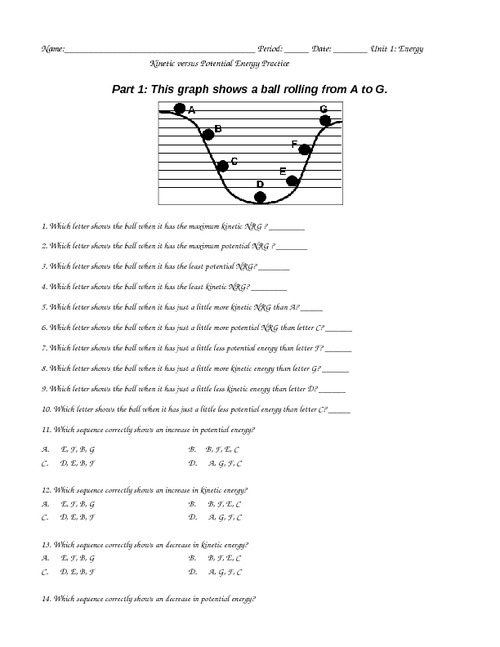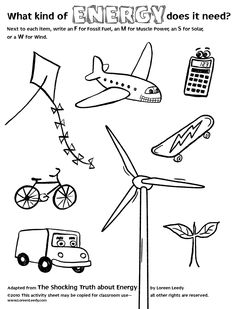Renewable Energy Worksheets Middle School
Renewable energy worksheets Middle School students can engage with provide a valuable learning tool for exploring this important and rapidly expanding field. These worksheets offer an informative and interactive way for students to understand the concept of renewable energy, its sources, benefits, and the role it plays in sustaining our environment. With a focus on the subject of renewable energy, these worksheets are designed to help Middle School students grasp the fundamental concepts and develop a deeper understanding of the topic.
Table of Images 👆
More Energy Worksheets
Light and Heat Energy WorksheetsTypes of Energy Transfer Worksheet
Energy Light Heat Sound Worksheets
3 Forms of Energy Worksheets
Energy Worksheets for Third Grade
What is renewable energy?
Renewable energy is energy that comes from natural resources such as sunlight, wind, rain, tides, waves, and geothermal heat, which are naturally replenished on a human timescale. This type of energy does not deplete the Earth's resources and is considered environmentally friendly as it produces significantly lower greenhouse gas emissions compared to traditional fossil fuels.
Name three sources of renewable energy.
Three sources of renewable energy are solar power, wind power, and hydropower. Solar power harnesses energy from the sun using photovoltaic cells, wind power generates electricity using wind turbines, and hydropower generates electricity through the force of flowing water, typically from dams or rivers.
How does solar energy work?
Solar energy works by capturing sunlight using photovoltaic cells, which convert the sunlight into electricity through a process called the photovoltaic effect. These cells are typically made from silicon, which creates an electric field when exposed to sunlight, causing electrons to flow and generate electricity. The electricity produced can be used to power homes, businesses, and other facilities, providing a renewable and sustainable source of energy.
Explain how wind turbines generate electricity.
Wind turbines generate electricity by harnessing the kinetic energy in the wind. As the wind blows, it causes the rotor blades of the turbine to spin. This rotation turns a shaft connected to a generator, which then converts the mechanical energy into electrical energy. The electricity produced is then either used to power homes and businesses directly or stored in batteries for later use.
What are the benefits of using renewable energy sources over fossil fuels?
Renewable energy sources offer numerous benefits over fossil fuels, including lower greenhouse gas emissions, reducing air and water pollution, promoting energy independence and security, creating job opportunities, and contributing to the fight against climate change. Additionally, renewable energy sources are sustainable and have lower operating costs in the long run, making them environmentally and economically advantageous alternatives to fossil fuels.
Discuss how hydropower is harnessed.
Hydropower is harnessed by utilizing the energy of flowing or falling water to generate electricity. This process involves constructing dams, channels, and turbines to control and capture the water's energy. The force of the water turns the turbine blades, which then spin a generator to produce electricity. Hydropower is a renewable energy source that provides a clean and sustainable way to generate electricity without producing harmful greenhouse gas emissions.
Describe the process of geothermal energy production.
Geothermal energy production involves tapping into natural heat sources beneath the Earth's surface through wells drilled into hot reservoirs, where water turns into steam due to the high temperatures. The steam is then used to drive turbines connected to generators, converting the energy into electricity. Once the steam cools, it condenses back into water and is injected back into the ground to be reheated, creating a sustainable cycle of energy production. The generated electricity can then be distributed to power homes, industries, and other facilities.
How does biomass convert organic matter into energy?
Biomass converts organic matter into energy through a process called combustion or biochemical conversion. In combustion, organic materials such as wood, crop residues, and manure are burned to produce heat that can be used to generate electricity or heat buildings. Biochemical conversion involves breaking down organic matter using microorganisms or enzymes to produce biogas, biofuels, or other forms of renewable energy. These processes harness the stored chemical energy in organic matter and convert it into usable energy sources with lower environmental impact compared to fossil fuels.
Explain the concept of tidal energy.
Tidal energy is a renewable energy source that harnesses the power of the tides in oceans and seas to generate electricity. It relies on the gravitational forces of the Moon and the Sun, which cause the rise and fall of tides. Tidal power plants typically use turbines to convert the kinetic energy of moving water into electrical energy as the tides flow in and out. This form of energy generation is considered sustainable and reliable, as tides are predictable and occur twice a day. Tidal energy has the potential to provide a clean and constant source of power for coastal regions.
Discuss the potential future advancements in renewable energy technology.
Future advancements in renewable energy technology are likely to focus on increasing efficiency and reducing costs of technologies such as solar panels, wind turbines, and energy storage systems. Innovations in materials science may lead to lighter and more durable components, while advancements in artificial intelligence and data analytics could improve the management and integration of renewable energy sources into the grid. Furthermore, the development of new technologies such as wave and tidal energy, geothermal energy, and hydrogen fuel cells holds promise for expanding the range of renewable energy options available. Overall, the future of renewable energy technology is expected to be characterized by increased reliability, affordability, and sustainability.
Have something to share?
Who is Worksheeto?
At Worksheeto, we are committed to delivering an extensive and varied portfolio of superior quality worksheets, designed to address the educational demands of students, educators, and parents.




































Comments